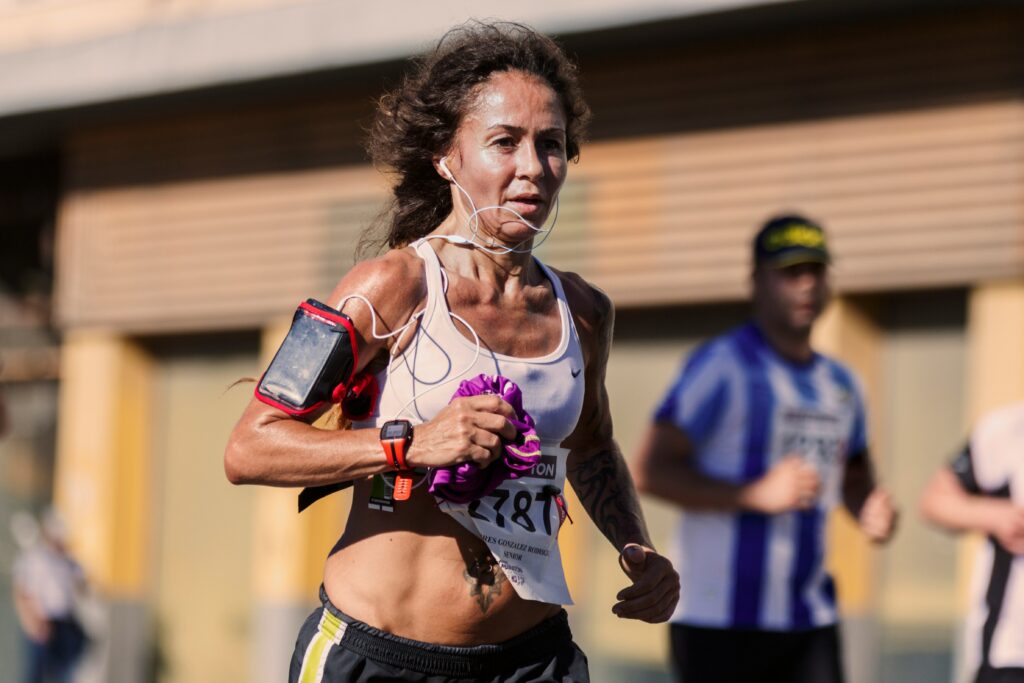Think fitness trackers are just step counters? Think again. From smartwatches to sensor-packed clothing, wearable technology is changing how athletes train, recover, and stay injury-free. Here’s how these powerful tools are turning everyday fitness into science-backed performance.
What Is Wearable Technology and what’s the hype?
Once upon a time, fitness tech meant a bulky pedometer or maybe a clunky heart rate monitor strapped to your chest. Today, it’s a different story. Wearable technology has evolved into sleek, powerful gadgets that can track almost everything happening inside and outside your body. We’re talking heart rate, sleep, stress, oxygen levels, posture, and even how your muscles fire during a workout.
This kind of data isn’t just cool—it’s useful. Especially for athletes. Whether you’re a casual jogger or a full-on triathlete, wearable tech helps you understand your body better, avoid injuries, and push your athlete performance further. It’s like having a silent coach on your wrist—or woven into your shirt.
Types of Wearable Fitness Devices
Let’s break down the team of wearable fitness devices that athletes are using right now:
Fitness Trackers & Smartwatches for Fitness
These are the everyday wearables—Fitbit, Apple Watch, Garmin, and more. They’re great for tracking steps, monitoring your heart rate, checking sleep, and keeping tabs on daily movement. Many now also offer VO₂ max monitoring, HRV (heart rate variability) readings, and even ECG monitoring. These are the most common forms of biometric fitness tracking.
Smart Clothing with Sensors for Athletes
This is next-level. Companies are building sensors into clothing—shirts, leggings, sports bras—that measure things like breathing rate, posture, and muscle activation. This smart sensor clothing is incredibly useful for sports like running, yoga, and strength training. It’s the future of smart sports gear.
GPS-Enabled Wearables
These are essential for runners, cyclists, and team sports players. They track location, pace, distance, and elevation. Devices like Garmin Forerunners or Catapult GPS trackers offer ultra-precise performance data. Many of these include motion sensors in sports to monitor acceleration and deceleration.
Specialized Athlete Sensors
These include muscle oxygen sensors, pressure sensors, and systems for biomechanics and movement analysis. They’re often used by professional athletes or serious fitness enthusiasts who want to fine-tune every movement and avoid injury using advanced athlete data analytics.
What Wearables Actually Measure (And Why It Matters)
Wearable technology isn’t just collecting data—they’re giving you insight. Here’s what they’re measuring and why it’s so important.
Physiological Data
- Heart Rate (HR): Tells you how hard you’re working.
- HRV (Heart Rate Variability): Shows your stress and recovery levels. Low HRV? Time to take it easy.
- Sleep Tracking for Recovery: Helps you know if your body’s getting real rest.
- VO₂ Max Monitoring: Measures how efficiently you use oxygen—a major fitness indicator.
- Stress & Recovery Metrics: Helps you balance effort with rest.
- Calories & Energy Burn: Gives you a rough idea of your fuel needs.
- Biometric Fitness Tracking: Encompasses all the data your wearable gathers for performance and recovery.
Biomechanical & Movement Data
- Motion Sensors in Sports: Analyze speed, agility, and movement patterns.
- Force & Pressure Sensors: Show how your muscles work and where pressure is being applied.
- Acceleration/Deceleration: Important for sports like football, basketball, or sprinting.
- Biomechanics and Movement Analysis: Helps correct form, reduce strain, and prevent injury.
- Training Load Management: Ensures you’re not overtraining or undertraining.
How Wearable Technology Improves Athletic Performance
This is where things get really exciting. All that data? It’s not just numbers—it leads to better decisions, smarter training, and fewer setbacks. That’s the key benefit of wearable tech in sports training.
Data-Driven Training Plans
Wearables help you train based on real-time feedback from your body. Say your HRV is low and sleep score is off—your device might recommend a rest day instead of pushing through. That’s smart. This is how wearable tech improves athletic performance.
Injury Prevention Tech
Ever heard of someone tearing a muscle out of nowhere? Often, the signs were there—but unnoticed. Wearables can detect fatigue, poor form, or overuse patterns and alert you before it’s too late. That’s why wearable technology for injury prevention is such a hot topic.
Real-Time Performance Tracking
Want to know your pace mid-run? Or your heart rate during sprints? Wearables give live updates. Some even offer haptic feedback (vibration) when you’re outside your ideal range. Real-time performance tracking is a game-changer for athlete performance.
Coaching with Wearable Data
Coaches can use this data too. From a distance, they can track a whole team’s performance, recovery, and workload. It’s no longer just about what you see—it’s about what the data shows. Coaching with wearable data is now part of sports technology innovations.
Apple Watch vs. Garmin vs. Elite Wearables
Which device is best? That depends on your goals. Let’s compare Apple Watch vs Garmin for fitness tracking.
Apple Watch
- Great for all-day tracking and lifestyle features.
- Offers ECG, blood oxygen, HRV, and sleep tracking.
- Shorter battery life, but sleek and easy to use.
Garmin (e.g., Forerunner Series)
- Built for endurance athletes.
- Offers VO₂ max, HRV, GPS, and long battery life.
- Rugged and data-rich, but more complex.
Elite Wearables (WHOOP, Polar, Catapult)
- Designed for pro-level tracking.
- Measures strain, recovery, sleep, and more.
- Ideal for coaches and athletes in competitive sports seeking the best wearable fitness devices for athletes.
Are These Gadgets Actually Accurate?
Short answer: Mostly yes. Long answer: It depends.
- Heart Rate: Wrist sensors are decent, but chest straps are better.
- HRV & Stress: Pretty reliable—especially if tracked consistently.
- Sleep: Good for general insights, not as precise as sleep labs.
- Movement Tracking: Great when sensors are placed properly.
- Calories Burned: Just a ballpark figure, not gospel.
Always combine data with how your body feels. The numbers guide you—they don’t control you.
The Future of FitnessWearable Tech
Wearables are evolving fast. Here’s what’s coming:
AI-Powered Fitness Wearables
Devices will soon use AI to predict injuries, create smarter workout plans, and even coach you in real time. Imagine your watch telling you to correct your form mid-squat.
Better Sensors, Smaller Design
Expect more accurate readings, better battery life, and ultra-comfortable devices that you forget you’re even wearing.
Smart Sensor Clothing + AR/VR Training
Picture shirts that show your posture live on screen, or AR glasses that give real-time running form tips.
Full-System Sync
Everything from your watch to your scale to your hydration levels will connect. Coaches can view entire dashboards of data to help guide your training.
Connected Athlete Communities
Wearables will help you link up with others—sharing insights, motivating each other, and building performance communities worldwide. It’s one more reason wearable recovery tools are on the rise.
Real Athletes, Real Results
Let’s talk real-world examples:
- Fitness wearables for runners like Garmin help track pace, HR, and cadence mid-run.
- Cyclists track power output and fatigue with WHOOP.
- Soccer teams use GPS vests to monitor player movement and make better substitutions.
- Swimmers use wearables to track stroke rate, rest, and oxygen use.
It’s no longer just about talent or training—it’s about the data.
Frequently Asked Questions (FAQ)
What is wearable tech in sports?
Wearable tech includes smartwatches, fitness trackers, and smart clothing with sensors for athletes that monitor physical activity, recovery, and injury risk.
Are fitness wearables worth it?
Yes—if you use the data wisely. They can help improve performance, track progress, and prevent injuries.
Which is better: Apple Watch or Garmin?
Apple Watch is better for casual users. Garmin is ideal for serious athletes who want deeper data, better battery, and more training tools.
How accurate are wearable fitness trackers?
They’re accurate enough for training guidance, but not 100% perfect. For serious athletes, chest straps and professional-grade devices are more precise.
Can wearable tech prevent injuries?
Yes—by detecting signs of overtraining, poor recovery, or bad movement patterns, they can help you adjust before injury happens.
Do beginners need wearable tech?
Not a must, but it helps. Even beginners benefit from knowing their heart rate zones, sleep quality, and activity levels.
Wearable Technology Isn’t the Future—It’s Now
Whether you’re chasing a personal record, building strength, or recovering from injury, wearable technology can guide you there faster and safer. You don’t need to be an elite athlete to benefit. You just need curiosity, consistency, and a willingness to learn what your body is telling you.
So go ahead. Put on that watch. Zip up that sensor-embedded shirt. You might just find that the smartest coach isn’t yelling from the sidelines—it’s quietly buzzing on your wrist.

